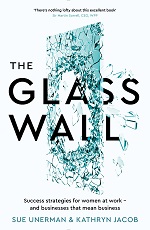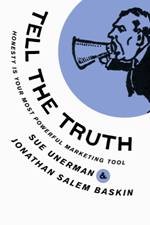Better ideas
 Creative problem solving is crucial to everyone’s job now. Innovation is part of the day job.
Creative problem solving is crucial to everyone’s job now. Innovation is part of the day job.
Sometimes that means doing new things in new ways. Sometimes that means new things in old ways or old things in new ways.
There’s two dominant schools of thought on innovation in media. Professionals who believe that not enough has changed and are sure that there’s radical change in reaching people in the right way, with the right message and at the right time which will grow brands and drive more effective work using new tech.
Others pour scorn on the digital utopia and suggest that the market will swing back to traditional brand building techniques. (Have you read Ritson on 2018?).
The media landscape has been made less navigable by these contrasting orthodoxies.
The truth lies in between.
Because it depends. On the brand, on the category, on the audience and on the timescales of effectiveness. We need a steam of better ideas about how to solve new problems.
The movie mogul Steven Spielberg has been making blockbuster films for decades. Everyone reading this blog loves one of his films, at least: Jaws, Jurassic Park, Schindler’s List, Raiders of The Lost Ark….et al. It is interesting and useful to know that he doesn’t rest on tried and trusted techniques and ways of working despite his amazing body of work and the army of adoring fans and strong critical acclaim.
He could rest on his laurels. He doesn’t. With 40+ years of experience he has turned his camera to a new genre of movie, one that is spot on for the current zeitgeist of questionable news and a woman brave enough to speak truth to power.
The Post opens this week. It tells the story of The Pentagon Papers. Documents that revealed that the US government had been lying about the Vietnam war. The documents were initially leaked to the NY Times but President Nixon’s lawyers shut down their ability to publish. The Washington Post got hold of them and published. It was a high risk thing to do, one that could have landed the owner and editor in jail. The owner, Katherine Graham, stood up for truth in the face of the full force of the government shut down.
Spielberg says it’s his first political thriller. He says he likes new challenges because he gets all his best ideas when he doesn’t know exactly what he is doing: “I get better ideas when I am standing on my heels, not on the flat of my soles. It’s because I don’t want to fall, and I need to regain my balance… it’s scary but healthy.”
Want better ideas for problem solving in 2018. You will need them. Get on your toes, get outside your comfort zone. Keep the knowledge and experience that you’ve earned but don’t over rely on them. Get on your toes.





How “path dependence” can help and also prevent progress
Thursday, January 25th, 2018The qwerty keyboard doesn’t make much sense.
It did once, it was designed to make typing easier. When typewriters were manual, typing was limited largely to professional typists who used all their fingers for touch typing.
Mad Men depicted the typing pool perfectly. In media, if you were important, your fingers never touched a keyboard. Usually no typewriter in an ad agency was touched by a man.
Typing was done in a typing pool, (and the overwhelming majority of typists were women.) The QWERTY keyboard had two main benefits. It was constructed to ensure that manual keys didn’t get stuck on each other. And the design ensured that the most frequent letters used were in the middle of the board, and accessible. Ps, Qs and Zs were outliers.
There won’t be many readers out there who used an old fashioned typewriter. Electric typewriters became mainstream in 1970s and 80s and once they were in use the old problem that QWERTY solved was already reduced. Manual typewriters were hard on the fingers, especially the pinkies. If you had to reach with your little fingers to the keys at the edges, it could hurt.
Touch typing requires typists to rest their fingers in the home row (QWERTY row starting with “ASDF”). The more strokes there are in the home row, the less movement the fingers must do, thus allowing a typist to type faster (without keys sticking), more accurately, and with less strain to the hand and fingers when typing on a manual keyboard.
Everyone uses a keyboard. Few people learn touch typing. QWERTY keyboards live on however due to the phenomenon of path dependence.
This is where something that is first to market becomes standard and advantaged even if other better options are available or usage conditions change.
The economist Brian Arthur thinks the supremacy of the internal combustion engine in the last century is another example of path dependence. The investments in infrastructure meant that cars ran on petrol even if there were better alternatives much earlier than the current shift to hybrid and electric.
Path dependence is one of the reasons that big brands thrive. We’re used to Brand X, so we carry on buying it, even if another better option is available. Revitalising a brand therefore in the light of new competition is crucial to fend off challenges to path dependence in a category. Building memory structures for a new brand, to create a path dependence, that’s our business in comms too.
Path dependence is our business. It can however also break our business if we carry on with ways of working that are no longer useful even in the face of a better way.
A competitive review is often the task of a new planner. She may be instructed to carry it out according to a tried and trusted way of working. If she feels that the generation of 97 charts and little insight is not that productive she will not be the first junior planner to think so. She may well remain silent and continue to create PowerPoint decks that reveal little other than late nights and a burgeoning expertise in chart generation.
If it isn’t interesting, if there isn’t an insight, it should be redesigned and challenged.
If it’s one of the jobs that can be better done by robots as it currently stands, the path dependence, the tried and tested way of working, must change.
A good business, with transformation as a part of its strategy, must consider where path dependence exists. If something is worth changing radically have courage to chuck out those practices and replace them with new and better ways of working.
Posted in MediaComment | No Comments »